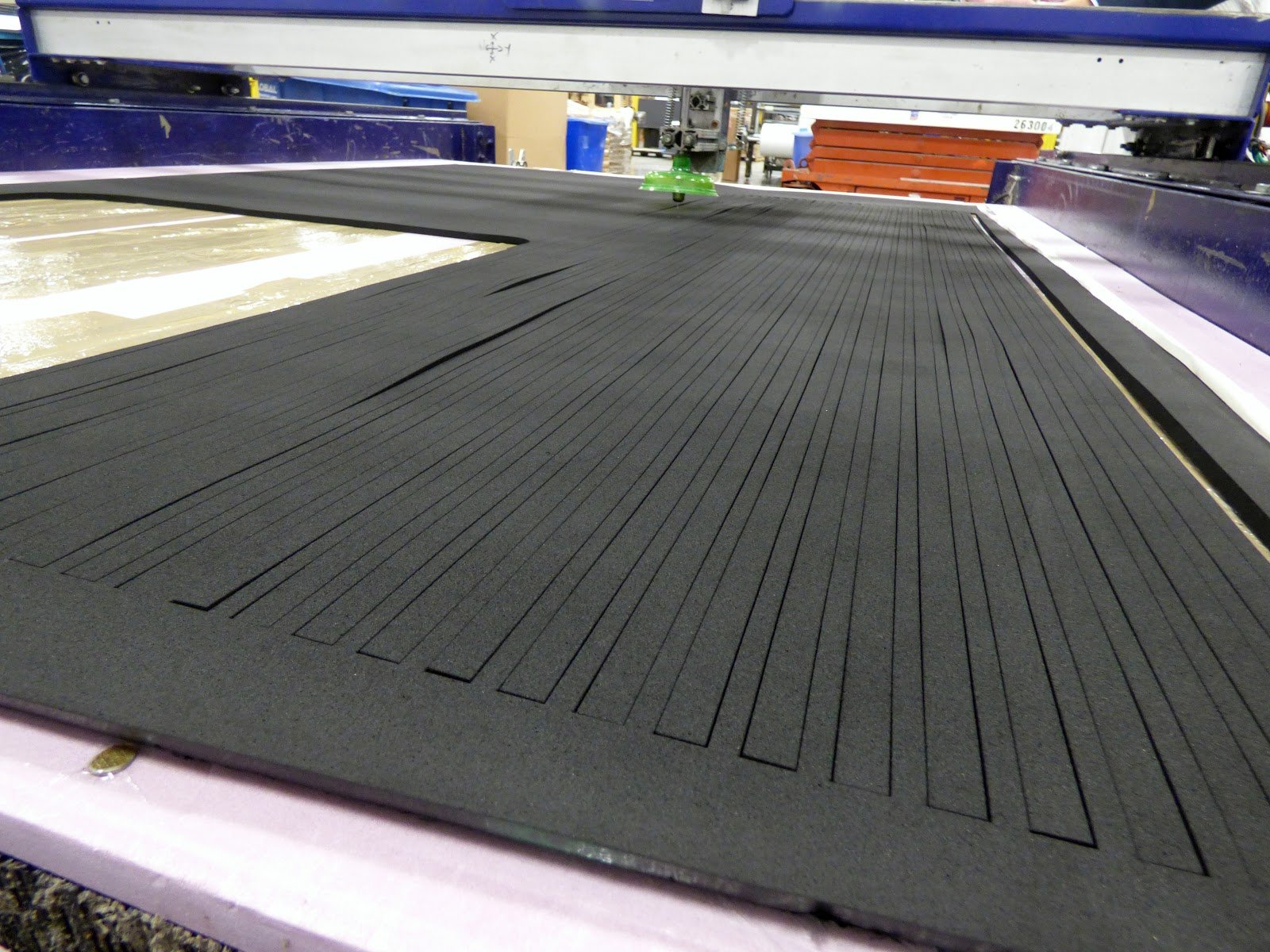Why Shock Absorption Is Important & How To Solve It
Back To Blog
Why Shock Absorption Is Important & How To Solve It

Shock absorption is a crucial factor in the design and performance of many industrial and consumer products. Whether it's protecting sensitive electronics, ensuring user comfort, or preventing mechanical failure, understanding how to manage shock absorption can make a big difference in product longevity and safety. In this article, we'll explore why shock absorption matters, the common solutions used, and how Sur-Seal can help you find the best materials for your needs.
Why Shock Absorption Matters
In industries such as automotive, medical, HVAC, and electronics, managing shock and vibration is essential. Sudden impacts, vibrations, or mechanical stress can damage delicate components, reduce product lifespan, and even pose safety risks. Effective shock absorption helps distribute these forces, minimizing damage and improving overall performance. It also contributes to quieter operation and better user experience, especially in devices that people interact with daily.
Key Solutions for Effective Shock Absorption
1. Closed-Cell Foam for Strong Impact Resistance
Closed-cell foam is known for its durability and ability to resist compression, making it ideal for high-impact applications. Its structure allows it to absorb and disperse energy effectively, offering excellent protection against physical stress and environmental factors like moisture. This material is commonly used in automotive parts, protective packaging, and heavy-duty equipment where reliability is key.
2. Open-Cell Foam for Flexibility and Lightweight Cushioning
Open-cell foam provides a more flexible and lightweight option, making it suitable for applications where sound absorption and minor impact resistance are needed. It’s often used in HVAC systems, electronics, and other environments where flexibility and noise reduction are important. Unlike closed-cell foam, open-cell foam allows for better airflow and can be tailored for specific cushioning needs.
3. Custom Dampening Solutions
Custom dampening materials, such as polyurethane, rubber, and non-woven options, are designed to handle specific types of vibration and shock. These materials are engineered to match the unique requirements of each application, ensuring optimal performance and long-term durability. Sur-Seal offers tailored solutions that can be adapted to fit a wide range of industrial and commercial uses.
4 Key Questions Engineers Should Consider When Selecting a Cushioning Solution
Choosing the right cushioning solution isn’t just about picking a material — it requires a deep understanding of the environment, mechanical demands, and compatibility with other components. Here are four critical questions engineers should ask when selecting a shock-absorbing material:
What frequency is causing the vibration or noise?
Understanding the frequency of the vibration (low, medium, or high) is essential for selecting a material that can effectively absorb and dampen it. Different materials respond differently to various frequencies, so matching the material to the problem is key to reducing unwanted noise and wear.
What’s the application? Are there any specific factors that need to be incorporated?
The application context — whether it's in automotive, medical, HVAC, or electronics — will determine the type of material required. Engineers should consider regulatory standards, environmental conditions, and material compatibility. For example, closed-cell foam is ideal for harsh, moisture-prone environments, while open-cell foam may be better suited for indoor applications requiring sound absorption.
What materials will the solution bond with?
The chosen cushioning material must adhere well to the surrounding components. Compatibility with metals, plastics, or composites is crucial for long-term durability and reliable performance. Engineers should evaluate bonding requirements to ensure the material stays in place under operational conditions.
What’s the primary issue we’re trying to solve?
Clarifying the main goal — whether it's shock absorption, vibration damping, noise reduction, or a combination — helps guide the selection process. A clear understanding of the problem allows for a more targeted and effective solution, ensuring that the cushioning material meets the specific needs of the application.
By addressing these questions, engineers can make informed decisions that lead to better-performing, longer-lasting products. Sur-Seal’s Lunch-and-Learn sessions offer expert insights and hands-on guidance to help engineers refine their designs with advanced cushioning solutions.
How Sur-Seal Can Help
Sur-Seal has the expertise and resources to support a wide range of shock absorption needs, from material selection to custom prototyping. Whether you're working on a sensitive medical device, a rugged automotive component, or a durable electronic casing, Sur-Seal offers tailored solutions that meet industry standards and real-world demands.
Choosing the Right Material With Sur-Seal’s Experts
With a broad portfolio of materials, including foams, nonwovens, and custom dampeners, Sur-Seal ensures that every project gets the right balance of strength, flexibility, and resilience. Their team of experts can guide you through the selection process, helping you choose the most suitable materials for your specific application.
Don’t wait until the last minute to address shock absorption issues. Incorporate the right materials early in the design phase to enhance performance, reduce risk, and improve product reliability. Contact Sur-Seal today to discuss your needs and get personalized support for your next project.
Â
This category showcases China's leading manufacturers of bi-oriented film machines, also known as bi-oriented film lines. These advanced machines produce high-performance films with superior strength, clarity, and barrier properties. Ideal for automatic packaging applications, bi-oriented film machines create innovative solutions using new techniques like PP film making. Explore this category to find the perfect machine for your demanding packaging needs and discover a world of possibilities beyond.
Bi-Oriented Film Machine,Bi-Oriented Film Line,Automatic Packaging Cast Film Line,New Technique Pp Film Making Machine
Baijia Mechanical Equipment (Huizhou) Co., Ltd. , https://www.castfilmmachine.com